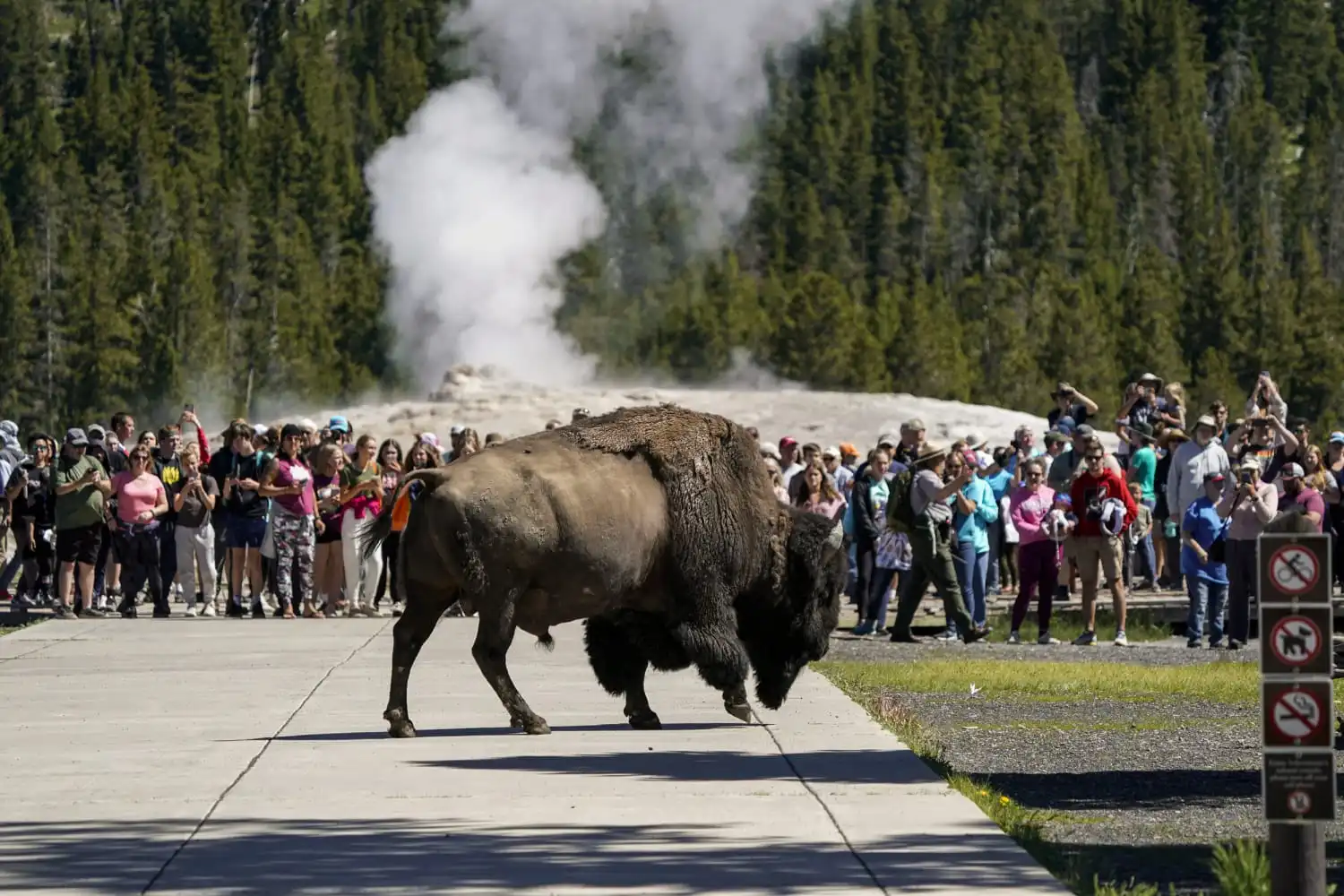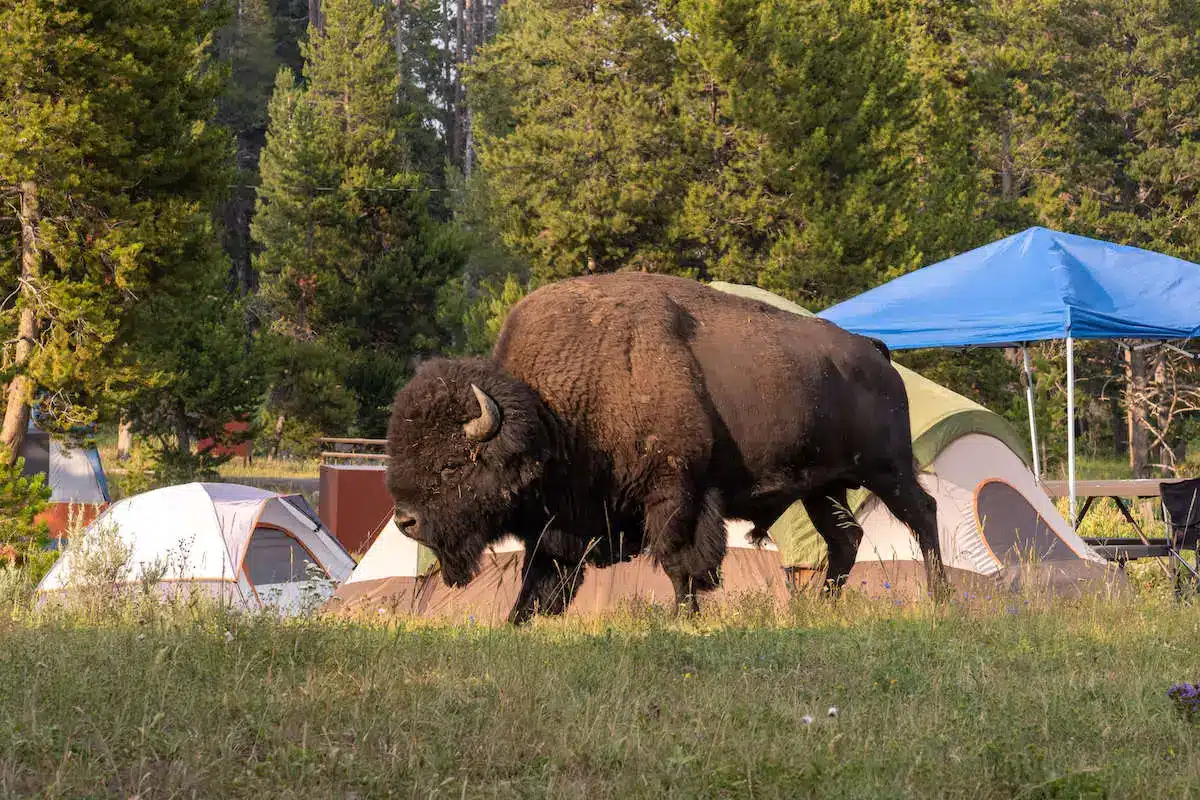Yellowstone National Park, with its diverse ecosystems, geothermal wonders, and abundant wildlife, is a premier destination for campers seeking an immersive outdoor experience. To make the most of your camping trip to this iconic national park, it’s essential to be well-prepared and informed. Here are some invaluable camping tips for Yellowstone National Park.
1. Choose the Right Campground
Yellowstone National Park offers 12 campgrounds with over 2,000 campsites, each providing a unique experience. It’s crucial to select a campground that fits your needs and preferences:
- Madison Campground: Located near the West Entrance and ideal for access to geysers and the Madison River.
- Grant Village Campground: Close to Yellowstone Lake and perfect for water-based activities.
- Mammoth Campground: The only campground open year-round, located near the park’s historic northern entrance.
Reservations are highly recommended, especially during peak season (June through September). Popular campgrounds fill up quickly, so book your spot as early as possible through the National Park Service’s reservation system.
2. Understand the Rules and Regulations
Familiarize yourself with Yellowstone National Park’s camping regulations to ensure a safe and enjoyable experience:
- Bear Safety: Yellowstone is bear country, so proper food storage is critical. Use bear-proof storage containers and never leave food unattended.
- Campfire Restrictions: Campfires are allowed only in designated fire rings and grills. Always check for current fire restrictions and never leave a fire unattended.
- Leave No Trace: Practice Leave No Trace principles by cleaning up all trash, respecting wildlife, and minimizing your impact on the environment.
3. Be Prepared for Weather Changes
Yellowstone National Park’s weather can be unpredictable, with temperature swings and sudden storms. To stay comfortable:
- Layer Clothing: Bring layers to adjust to changing temperatures. Mornings and evenings can be chilly, even in summer.
- Rain Gear: Pack waterproof jackets, pants, and covers for your gear. Afternoon thunderstorms are common.
- Sun Protection: At high altitudes, the sun’s rays are stronger. Bring sunscreen, sunglasses, and hats to protect against sunburn.
4. Plan Your Activities
Yellowstone National Park offers a plethora of activities, from hiking and fishing to wildlife watching and geothermal exploration. Plan your itinerary to make the most of your trip:
- Hiking: Explore trails like the Fairy Falls, Mount Washburn, and the Grand Canyon of the Yellowstone. Always carry a map, water, and bear spray.
- Fishing: Obtain the necessary permits and follow park regulations. Popular fishing spots include Yellowstone Lake, the Firehole River, and the Madison River.
- Geothermal Features: Visit iconic sites such as Old Faithful, Grand Prismatic Spring, and the Norris Geyser Basin. Arrive early or late in the day to avoid crowds.
5. Wildlife Viewing Tips

Yellowstone National Park is home to a diverse range of wildlife, including bison, elk, bears, wolves, and eagles. For safe and successful wildlife viewing:
- Keep Your Distance: Stay at least 100 yards away from bears and wolves, and 25 yards from other animals.
- Use Binoculars: Bring binoculars or a spotting scope for a closer look without disturbing the animals.
- Drive Safely: Wildlife often crosses roads, so drive slowly and be prepared to stop.
6. Pack Essential Camping Gear
Bringing the right gear can make your camping experience more comfortable and enjoyable:
- Tent and Sleeping Gear: Choose a durable tent with a rainfly and a warm sleeping bag rated for the expected temperatures.
- Cooking Equipment: Bring a portable stove, cookware, and utensils. Bear in mind that campfires may be restricted.
- First Aid Kit: Include basic first aid supplies, medications, and any personal health items.
7. Know the Nearest Services
While camping in Yellowstone National Park offers a chance to disconnect, it’s important to know where to find essential services:
- Visitor Centers: Located throughout the park, visitor centers provide information, maps, and ranger-led programs.
- General Stores: Most campgrounds have nearby general stores where you can purchase supplies, food, and souvenirs.
- Medical Services: Familiarize yourself with the locations of medical facilities and emergency services within the park.
8. Respect Wildlife and Fellow Campers
Part of the camping experience is coexisting peacefully with both wildlife and other visitors:
- Quiet Hours: Adhere to quiet hours, typically from 10 PM to 6 AM, to ensure everyone can enjoy a peaceful night.
- Wildlife Etiquette: Never feed wildlife, and store food and trash properly to avoid attracting animals to your campsite.
9. Explore Beyond the Campground

Take time to explore the vast landscapes of Yellowstone National Park beyond your campsite:
- Backcountry Camping: For a more remote experience, consider obtaining a permit for backcountry camping. This offers solitude and access to less-visited areas.
- Scenic Drives: The park features several scenic drives, including the Lamar Valley and the Yellowstone Loop, perfect for spotting wildlife and enjoying the vistas.
10. Stay Informed
Stay updated on park conditions, weather forecasts, and any alerts or closures:
- Ranger Programs: Attend ranger-led programs to learn more about Yellowstone National Park’s natural and cultural history.
- Weather Updates: Check daily weather forecasts to plan your activities accordingly.
- Alerts and Closures: Monitor the National Park Service website or visitor centers for the latest information on road closures, trail conditions, and wildlife activity.
Conclusion
Camping in Yellowstone National Park is a truly unforgettable experience. By planning ahead, respecting the park’s rules and wildlife, and being prepared for all weather conditions, you can ensure a safe and enjoyable adventure. Embrace the beauty and wonder of Yellowstone, and create lasting memories in one of the world’s most magnificent natural settings. Visit Now
FAQ
Q1. What are the best campgrounds in Yellowstone National Park?
Some popular campgrounds in Yellowstone include Madison, Bridge Bay, Grant Village, and Canyon. Each offers unique landscapes and facilities, so choose based on your preferred location and amenities.
Q2. How far in advance should I book a campsite in Yellowstone?
It's recommended to book your campsite as early as possible, especially during peak seasons (summer and early fall), as spots can fill up quickly. Reservations can be made up to 6 months in advance.
Q3. What should I pack for camping in Yellowstone?
Essential items include a sturdy tent, sleeping bags rated for cold weather, layers of clothing (including warm layers even in summer), waterproof gear, bear-resistant food storage, and a reliable camping stove.
Q4. Are there bear safety precautions I need to follow while camping in Yellowstone?
Yes, it's crucial to store all food and scented items in bear-proof containers or lockers provided at campsites. Avoid leaving food unattended, keep a clean campsite, and follow all posted bear safety guidelines.
Q5. What are some recommended activities for campers in Yellowstone National Park?
Enjoy hiking trails like the Grand Canyon of the Yellowstone, wildlife viewing (from a safe distance), geothermal features like Old Faithful, and stargazing due to the park's dark skies.



